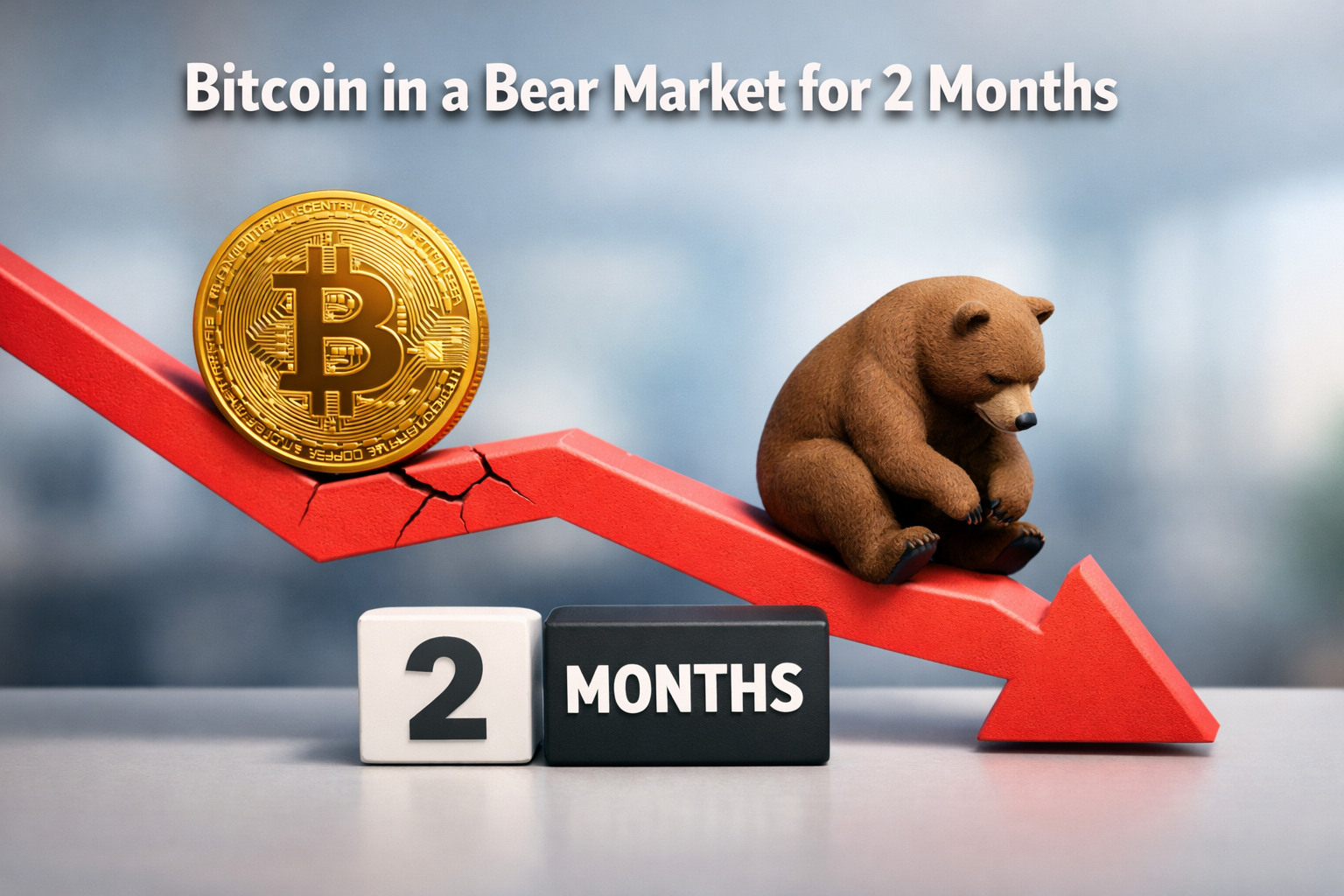Table of Contents
According to many news reports,
Bitcoin is the best-performing asset class in the last 10 years.
While we have all heard of Bitcoin, you may not know how good those returns are. So, let's take a closer look.
Is Bitcoin the Best Performing Asset Class in the Last Decade?
Compiled by the CEO of Compound Capital Advisors, Charlie Bilello examined the returns of the 17 best-performing asset classes since 2011 and came to an incredible discovery.
Asset Class Returns over the Last 10 Years...
— Charlie Bilello (@charliebilello) March 13, 2021
Data via @ycharts pic.twitter.com/yRvdkIX1BV
Bitcoin, by a large margin, is the best-performing asset class over the last 10 years!
Gains Since 2011: +20,000,000%
The cumulative gains for Bitcoin since 2011 are more than 20,000,000% which is significantly more than the Nasdaq 100 and US Large Caps, which had returns of 541% and 282%, respectively.
On an annualized scale, Bitcoin returned 230% - 10x higher than the Nasdaq 100, which was the second-best performing asset class. During the same period, U.S. large Caps recorded an annualized return of 14%, high-yield bonds gained 5.4%, while gold returned 1.5%.
Bitcoin is the clear winning when compared to traditional investments over the last 10 years. However, what are the annual returns on Bitcoin when looking at it from a 10-year, 5-year, and 1-year period?

What are the Annual Returns on Bitcoin?
Traditional investments are often compared based on annual returns, however in the case of Bitcoin most people look at it in terms of the price increase rather than a return on investment (ROI). When comparing Bitcoin to traditional investments, here is how Bitcoin performed, in terms of annual return for the last 10 years, 5 years, and the last year.

Bitcoin Annualized Return (Last 10 Years) +20,990%
Calculating from January 2013 to December 2023, the price of Bitcoin increased from $20 to $42,000, at an increase of 209,900%. Divided by 10, this works out to an annualized return of: 20,990%.
Bitcoin Annualized Return (Last 5 Years) + 190%
Calculating from January 2019 to December 2023, the price of Bitcoin increased from $4,000 to $42,000, an increase of 950%. Divided by 5, this is calculated as an annual return of: 190%.
Bitcoin Annualized Return (Last 1 Year) + 154%
Calculating from January 2023 to December 2023, Bitcoin increased in price from $16,500 to $42,000 making an increase of 154% within the last year.
As you can see no matter which way you slice the numbers, the returns on Bitcoin are extraordinary when compared to traditional investments.
If you would like to delve deeper into the history of price movements, especially in relation to price movements in the Bitcoin bull and bear market, check out our article below.
Bitcoin Price Action in Bull & Bear Markets
If you would like a detailed breakdown of the Bitcoin price movement within each of the Bitcoin bear and bull markets as well as learn some unique features of the price movement within these markets, check out this article:


How High Can Bitcoin Go?
If you are curious about the potential future price for Bitcoin and wondering when Bitcoin will exceed $100,000 or even if Bitcoin can exceed $1,000,000, you will need to read this article. We cover our Bitcoin Price Predictions and a lot more in our latest article titled Bitcoin (BTC) Price Prediction 2024, 2025, 2026, 2030.

Frequently Asked Questions:
How is the annual return of Bitcoin calculated?
The annual return of Bitcoin, like any investment, is calculated to assess its performance over a year. This calculation helps crypto investors understand how much their investment has grown or shrunk over that period. Here's a brief explanation of the methodology:
- Price Change: The most basic way to calculate the annual return is by looking at the change in price over the year. This involves subtracting the Bitcoin price at the beginning of the year from the price at the end of the year.
- Percentage Return: To convert this price change into a percentage, the price difference is divided by the beginning price, and then multiplied by 100. This gives the annual return as a percentage, showing the rate of return on the investment.
- The Formula: The formula for calculating annual return is: Annual Return (%)=(End of Year Price−Beginning of Year PriceBeginning of Year Price)×100Annual Return (%)=(Beginning of Year PriceEnd of Year Price−Beginning of Year Price)×100
- Consideration of Time Period: It's crucial to ensure the time period for calculating the return is exactly one year for an annual return. If the period is more or less, the return won't accurately represent an annual figure.
It's important to remember that past performance, such as annual returns, is not indicative of future performance. The cryptocurrency market, including Bitcoin, is known for its volatility, and returns can vary greatly from year to year.
What factors have contributed to Bitcoin's significant growth?
Bitcoin's remarkable growth over the last decade can be attributed to several key factors: its increasing adoption by businesses and individual investors as a form of payment and investment; technological advancements in blockchain technology enhancing its security and appeal; significant investments from institutional players; widespread media coverage boosting public awareness and interest; global economic uncertainties driving investors towards Bitcoin as a safe haven asset; progressive regulatory developments in some regions providing clarity and security; the FOMO effect among investors; Bitcoin's "halving" events creating scarcity; a growing trend of investors diversifying their portfolios with Bitcoin; and the innovation in financial products like futures and ETFs. These diverse drivers have collectively contributed to Bitcoin's status as a prominent asset in the financial world, though it's important to remember the inherent volatility and unpredictability of cryptocurrency markets.
What risks are associated with investing in Bitcoin?
Investing in Bitcoin comes with several risks:
- Volatility: Bitcoin's value can fluctuate wildly in a short period, leading to potentially significant financial losses.
- Regulatory Uncertainties: The lack of clear regulation in the cryptocurrency market can lead to unpredictability, impacting investment security.
- Fraud: There's a risk of falling victim to scams, including Ponzi schemes and fake cryptocurrencies.
- Price Manipulation: The price of Bitcoin can be artificially influenced, resulting in unforeseen and potentially substantial price changes.
- Technological Reliance and Failures: Bitcoin is dependent on technology, making it susceptible to technical glitches, cyberattacks, and blockchain network failures.
- Losing Access to Funds: If you lose your private keys or access to your digital wallet, there's no way to recover your Bitcoin.
- Cybertheft: Bitcoin wallets can be hacked, leading to the theft of funds.
To mitigate these risks, thorough research (DYOR), diversification, using reputable exchanges and secure digital wallets, and staying informed about regulatory changes are crucial.
Where can investors find more information about Bitcoin and its market trends?
Investors seeking information about Bitcoin and its market trends can explore a variety of resources:
- Cryptocurrency News Websites: Websites like CoinDesk and CoinTelegraph provide daily news and updates on Bitcoin and other cryptocurrencies.
- Financial News Platforms: Bloomberg, CNBC, and Reuters offer analysis and news on cryptocurrency markets.
- Online Forums and Communities: Platforms like Reddit (subreddits such as r/Bitcoin) and BitcoinTalk forums are great for community insights and discussions.
- Social Media: Following cryptocurrency influencers and analysts on Twitter, LinkedIn, or YouTube can offer real-time insights and opinions.
- Market Analysis Websites: Websites like TradingView and CryptoCompare offer market analysis, charts, and tools for tracking Bitcoin's performance.
- Educational Resources: Websites like Investopedia provide educational articles and guides on Bitcoin and cryptocurrency investing.
- Official Bitcoin Website: For foundational information, the official Bitcoin website (bitcoin.org) is a reliable source.
- Email Newsletters: Signing up for cryptocurrency investing newsletters, like ours at Altcoin Investor.
Remember to cross-verify information and be cautious of biased or speculative content.







